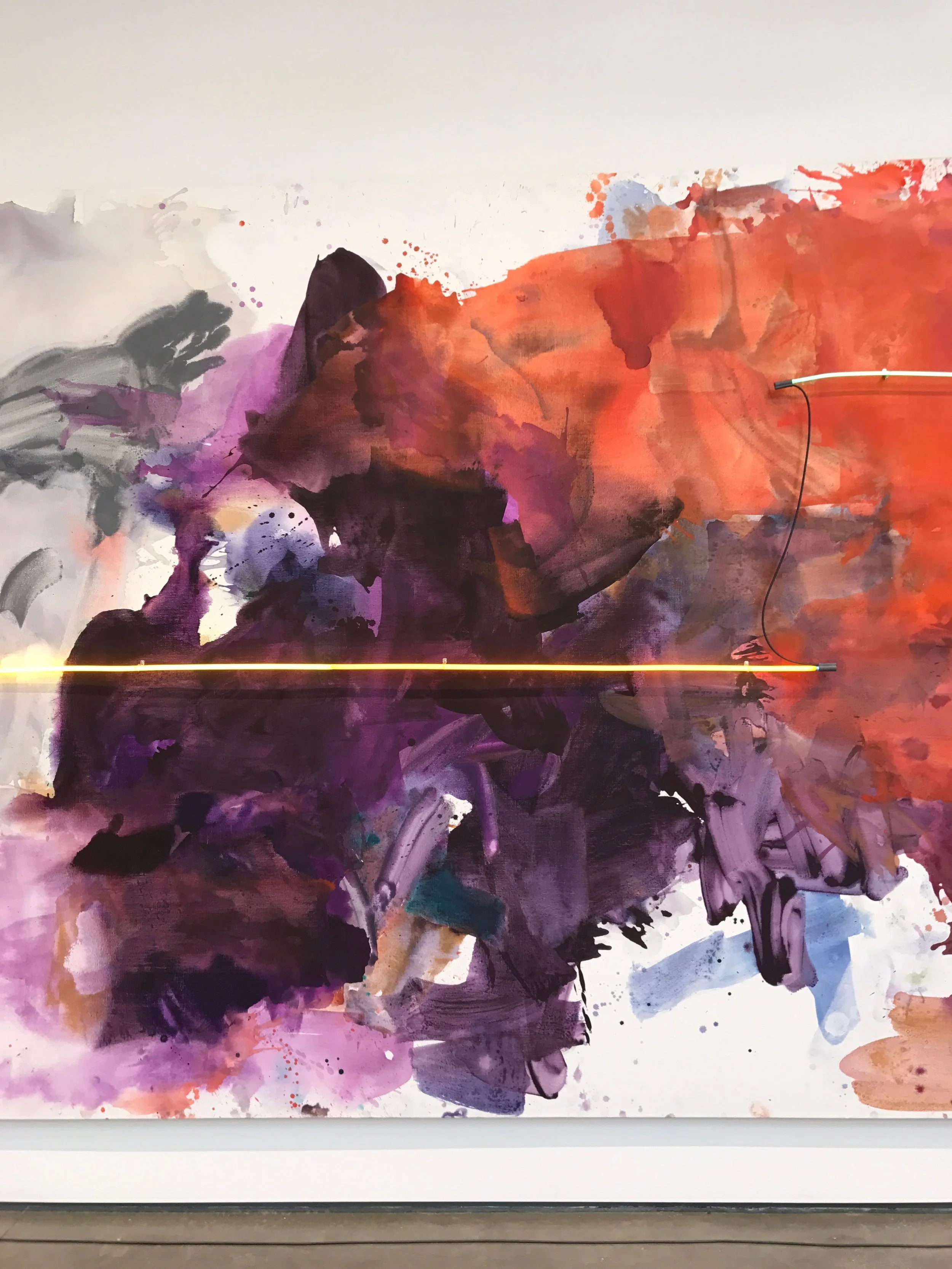Mary Weatherford: like the land loves the sea

Abstract painting is a polarizing genre of artwork. Many people are off put by the lack of defined subject matter while others are mesmerized by the aesthetics of the simplicity. Certain artists handle the category with such skill that it is hard to deny the beauty of their work. Mary Weatherford is one of those artists.
I first encountered Weatherford's work in 2014 when I visited the Museum of Modern Art to see the The Forever Now exhibition. This show highlighted rising stars in Contemporary Art who looked at the world from an atemporal lens. My understanding of Contemporary Art at the time was minimal, but when I walked into a gallery to see one of Weatherford's large scale abstract works with a neon tube slashing through it, I was instantly hooked. I was dying to see more of her work but never had the opportunity to see another show featuring her pieces until David Kordansky reintroduce her work to Los Angeles.
Mary Weatherford: like the land loves the sea features new works by the artist that feature her signature combination of flashe and neon tubing. Flashe is a vinyl based paint that dries in a matte finish. The paint can be thinned using water to create a watercolor like appearance, which Weatherford employees in her work. The neon tubes are reminiscent of work by artists like Donald Judd and Bruce Nauman, but Weatherford develops the idea further by affixing them to the painted canvas. The combination of these two materials creates an ethereal appearance with emulsions of color and radiant light that juxtapose the bohemian and the industrial.
The show is assembled in the usual Contemporary art model: large galleries, white walls, and bright lighting. In the North gallery are four massive pieces measuring ten feet by twenty feet. The one wall-one piece arrangement allows the viewer to take in each piece individually and get lost in the layers of color. As you walk through the two other galleries you notice the range of Weatherford's color palette when you encounter monochrome and neutral toned works. These pieces make it apparent that she is not only a master of color, but also composition.
Weatherford's ability to create paintings that are visually complex while simultaneously abstract is stimulating in a way that only the best artists can achieve. Many draw comparisons between the artist and Helen Frankenthaler, whose influence on Weatherford is obvious. I believe that as Weatherford has evolved she has shown that she is not just an imitation of previous painters, but rather a product of the coalescence of abstract artists before her.
Check out Mary Weatherford: like the land loves the sea at the David Kordansky Gallery, open until May 6, 2017.
Cheers,
Hugh











